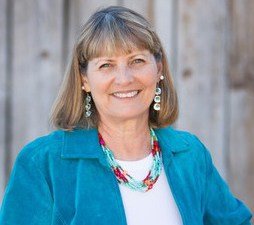I’ve often been asked, “What is the State of Jefferson?” “Is it REAL?”
Let me share the opening from IMAGES OF THE STATE OF JEFFERSON, the book I co-authored with Bernita Tickner. We sold the book to Arcadia Publishing and it was released in 2005:
The State of Jefferson exists as more than a fantasy. According to Jim Rock, a Siskiyou County historian, the real “State of Jefferson” is characterized by a state of mind, not a state with borders, and today’s Jefferson staters can be found in counties along the Pacific coast, the Nevada state line, down in the Sacramento Valley or out in central/eastern Oregon. Jefferson’s struggle for statehood, however, is lodged in history. The first legal attempt occurred in 1852, when a bill was introduced into the California State Legislature at Vallejo.
Though the bill failed, the notion did not, as noted in the January 14, 1854, edition of The Mountain Herald (Yreka, California): “The citizens of the County of Siskiyou and State of California are requested to meet at the Yreka Hotel, in Yreka, on Saturday evening, the 14th of January next, at 6 o_clock P.M., for the purpose of taking measures to secure the formation, at an early day, of a new Territory out of certain portions of Northern California and Southern Oregon; and also to appoint delegates to a general convention for the same purpose, to be held at Jacksonville on the 25th of January next.” Twenty-three men signed the declaration that followed, including pioneers such as E. Steele, C. McDermit, M. B. Callahan, M. Sleeper, J.M. Shackleford, W. Davidson, and A. V. Gillett. In 1859, gold miners from the same borderline counties tried to maneuver state lines in order to avoid paying taxes. Petitions were circulated, calling for the establishment of a county with names such as Klamath, Shasta, or Jackson. In 1860, Oregon tried to claim part of California by stepping 12 miles over the border until the northern boundary was established at 42 degrees north by Lieutenant Williamson.
Almost fifty years later, on March 31, 1910, in a letter addressed to the editor, we see Jefferson mentioned as the possible name for a new state. C. K. Klum wrote: “We have had men who exhibited a wisdom and prescience for our welfare that places us under a debt of gratitude, and their names should be given to our new states. Jefferson, in accepting Bonaparte’s offer for the sale of the Louisiana Purchase without any constitutional authority, as he admits, for doing it, placed us under such obligation. Acting without loss of time, he at once organized and sent off the Lewis and Clark exploring expedition to cinch and bind the bargain.”
In 1935, John Childs, a Crescent City judge, declared himself governor of a new state as a protest against poor roads, neglect, and perceived injustice coming out of Sacramento. From this simple protest arose a more formalized “revolt”, which began in Port Orford, Curry County, Oregon, the recognized birthplace of today’s State of Jefferson “movement.” Mayor Gilbert E. Gable and others stormed into the county courthouse, claiming that the natural resources of Oregon’s coastline as well as the Siskiyou ranges had been neglected for far too long and that Curry County should be transferred from Oregon to California. Perhaps to appease the crowd, the judge appointed a commission to study the likelihood of annexation. Immediately Gable sent a letter to California’s governor, Culbert L. Olson, who responded with modest enthusiasm. Oregon’s attorney general also responded, saying that Curry County “could annex itself to a dry lake” if it so desired. Nonetheless, Gable appointed himself interim governor and announced his platform: the new state would not impose sales taxes, income taxes, or liquor taxes, but would rely on its resources as well as a healthy red-light district to bring in revenue. John Childs joined the effort.
The concept of a 49th state so appealed to Yreka, Siskiyou’s county seat, that the Chamber of Commerce persuaded the Board of Supervisors to consider it. Yreka became the designated state capital. The Yreka 20-30 Club drafted a Proclamation of Independence and staged a protest along Highway 99.
The name, Jefferson, was selected after The Siskiyou Daily News ran a contest. J. E. Mundell of Eureka, California, submitted the winning name. A seal was created: a mining pan etched with a two Xs to signify the double-cross by Salem and Sacramento politicians. It is still used on flags, banners and memorabilia by “residents of the State of Jefferson”. Articles, editorials, letters, appeared in local papers and large publications, including the San Francisco Chronicle and Examiner, Life and Time. Writers, photographers, even newsreel companies, were sent to document the movement.
One young reporter, Stanton Delaplane, of the Chronicle, interviewed area residents. As he traveled despicable roads and experienced the harsh conditions, he wrote a stirring series of articles and won a Pulitzer Prize for his journalism. December 4th, l941 became election day for the state’s governor’s race. John C. Childs won. His inauguration was celebrated with a parade through downtown Yreka, led by a bear named “Itchy,” a rally and speeches. But who could have foreseen the future? Three days later, on December 7, 1941, Pearl Harbor was bombed and the nation went to war.



